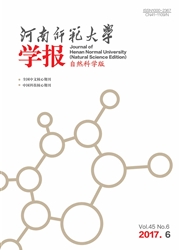

 中文摘要:
中文摘要:
利用局域密度近似第一性原理方法,研究了氢在Si低指数面(100)、(110)、(111)上的吸附结构.用两种不同的势(US-PP和PAW)对Si晶格常数优化,计算表明两种势对Si晶格常数的影响较小(仅为0.002nm).US-PP势总能计算表明:对于Si体系,清洁Si表面的(111)面最稳定;随氢环境的改变(氢化学势的不同),表面稳定结构也随着变化,与实验结果相一致.
 英文摘要:
英文摘要:
The calculations are carried out using the first-principles pseudopotential plane-wave total-energy method in the framework of density functional theory with the local density approximation. Calculations of hydrogen-covered silicon (100), (110), (111 )surfaces show that using the two different US-PP and PAW potentials, the discrepancy of the lattice constant of silicon is in 0. 002 nm. The total energy computation with US-PP shows that the ideal Si(111) surface is the most stable of the different Si surfaces, and with the different hydrogen chemical potential, the stability of hydrogen-adsorbed surfaces is distinct. The result is consistent with the experiments.
 同期刊论文项目
同期刊论文项目
 同项目期刊论文
同项目期刊论文
 期刊信息
期刊信息
